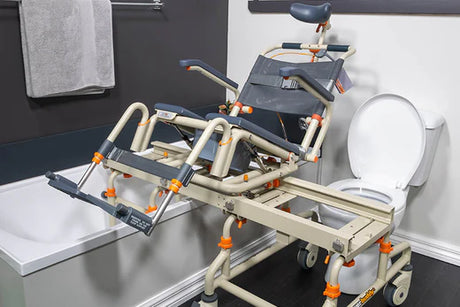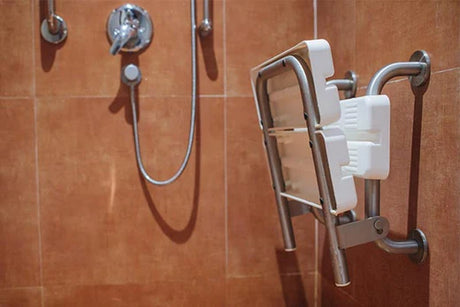Learn the features
Before using a shower chair, it’s important to understand all the features and functionality of it. Taking the time to do so will help make for a better bathing experience. For example, do the shower chair’s footrests adjust to different heights? Can the back rest be elevated? Is there a tilting function? How do you use these features? Read up and practice these without the user in the chair. With more information about how the chair works, the bathroom experience will be greatly enhanced. All features on Showerbuddy are designed to make both the user and carer’s lives easier.
If you’re not sure how a feature works, chat with the manufacturer, mobility equipment retailer or an OT familiar with the equipment for more help. If you’re working with a Showrbuddy chair, you’ve got many resources to learn the features, including BathCheck (our mobile app), our YouTube channel, through a demonstration or training session with our team, directly via email or social media with Showerbuddy, or through your distributor.
Set up the chair according to instructions
If you’re ever unsure about setting up your shower chair with the instructions provided in the box, jump online to see videos of the assembly process; this can help better illustrate how certain parts go together and what ‘right’ looks like in context.

Make adjustments to suit the user
Utilise accessories if available
Explore all the options available for your chair and consider adding these to make the process of bathroom use easier for both user and carer.

Make sure the bathing position is optimal
With a solution like Showerbuddy that offers 360 rotation, there are less restrictions around positioning the user, although it still should be in a logical, safe part of the (gives the impression the bath units rotate ???)shower. Being able to swivel the user makes life much easier for both carer and the user.
Adjust to ensure no loss of stability when bathing

With our solutions, we provide both floor and bathtub side stabilisers giving multi-directional support – but do take care to ensure they are flush with each surface with no play.
Develop a bathroom routine
Once there’s a routine in place, good shower chairs will make the process that much easier and safer.






















![Toilet Training A Young Child With Mobility Challenges [And How A Shower Chair Can Help]](http://shower-buddy.com/cdn/shop/articles/toilet-training-disabled-child_520x500_a90e5234-d372-435d-aa56-8da15dd3836c.webp?v=1722557239&width=460)




























